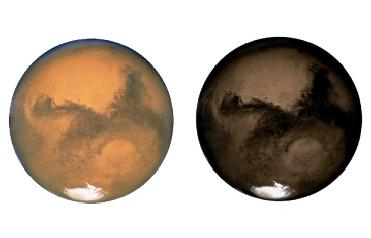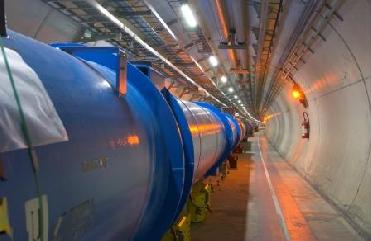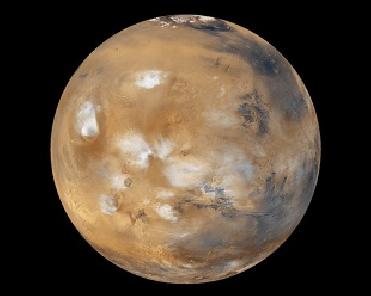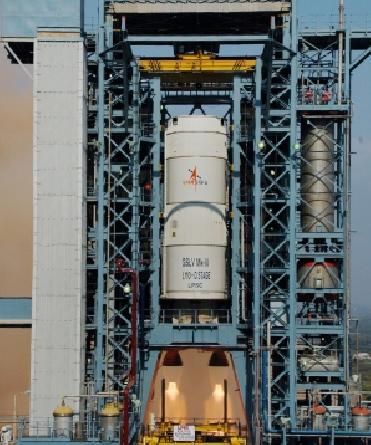
Mars is red now (left), but it may have looked charcoal (right) in the past. Image Credit: NASA/ESA/Hubble Team.
LONDON (PTI): Mars' distinctive red colour could be the result of thousands of years of wind-borne sand particles colliding with one another, a new study says.
Planetary scientists claim that Mars' red colour is caused when a dark form of iron called magnetite oxidises into a reddish-orange form called haematite. Some say water caused the oxidation while some blame the ultraviolet rays.
Now a team of astronomers at the Aarhus University in Denmark has claimed that the trigger may be wind and not rust.
To simulate the wind transport of sand in the laboratory, the scientists sealed tiny particles of magnetite and quartz -- a mineral present on both Earth and Mars -- in a glass flask filled with carbon dioxide.
For several months, they mechanically tumbled it like clothes in a dryer, noticing that the flask got redder over time as more of the magnetite changed into haematite.
The astronomers suspect that the constant collisions split the quartz grains apart, exposing chemically reactive surfaces that oxidise the particles of magnetite, the 'New Scientist' reported.
"On Mars, quartz and haematite particles could collide while being blown about by winds in dust devils and global dust storms," team leader Jonathan Merrison said.
Assuming there was not enough water on early Mars to rust the planet, the wind might have taken just a few hundred thousand years to transform it from a charcoal colour to red, according to the astronomers.
Experts have welcomed the findings published in the latest edition of 'Icarus' journal.
Joel Hurowitz of NASA's Jet Propulsion Laboratory in California, called the work "interesting". "Quartz has been detected in the bedrock in some regions of Mars. But it is a relatively hard mineral that may not be easily broken down into sand by the wind on Mars," he said.













The Indian Air Force, in its flight trials evaluation report submitted before the Defence Ministry l..
view articleAn insight into the Medium Multi-Role Combat Aircraft competition...
view articleSky enthusiasts can now spot the International Space Station (ISS) commanded by Indian-American astr..
view article